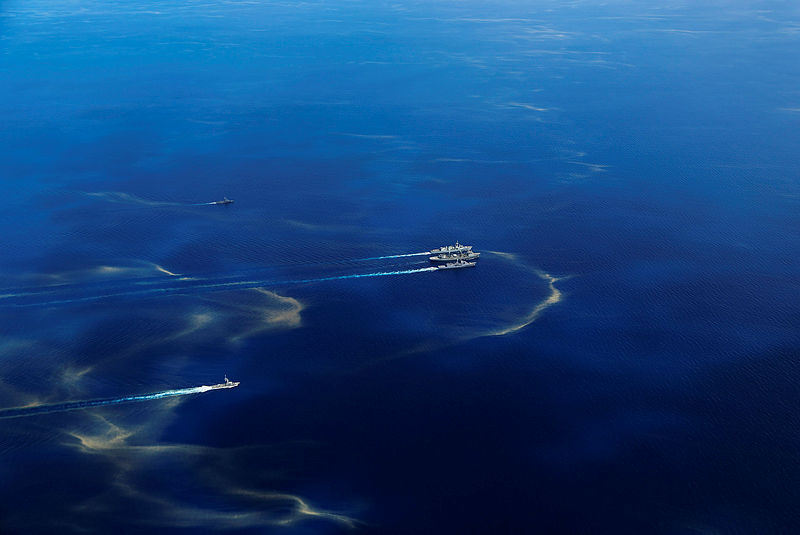
Let’s cut to the chase. Few strategic assessments have ever recommended the deleting of a hyphen in favour of a dash as a principal policy recommendation. So Andrew Phillips’ recent ASPI Strategy paper,
From Hollywood to Bollywood?, is distinctive on those grounds alone. But much more importantly, it’s a nicely-weighted exploration of the concept of the Indo-Pacific in Australian strategic thinking. Underlying Andrew’s claim—that we’d be better off emphasising
Indo/Pacific differentiation rather than
Indo-Pacific aggregation—is an argument about the important strategic differences between the Indian and Pacific oceans, and the practical difficulties of conjoinment in an increasingly interconnected world.
So his paper merits a close reading. The rise of the Indo-Pacific concept parallels the rise of the Asian great powers, their increasing interconnectedness, and their growing capabilities to play in each other’s frontyards. But does it tell us more than that? What does it mean when we merrily pin together different strategic orders—transforming Europe and Asia into Eurasia, and the Indian and Pacific Oceans into the Indo-Pacific? The terminology typically takes for granted something that otherwise needs to be proven, like the rise of an Indo-Pacific ‘community’ or the growing importance of an Indo-Pacific strategic order.
Andrew’s correct that evidence of such strategic linkages remains comparatively thin. That’s partly seen in the different arguments advanced for closer regional aggregation. Advocates typically focus upon different perceived benefits, and Andrew sketches out at least three distinct groups:
- 'minimalists', who see India as a useful balancer of rising Chinese power and influence
- 'maximalists', who see the need to draw both India and Indonesia into a regional concert of powers, and
- 'functionalists', who focus on the critical maritime trade and energy flows linking the two regions.
Australia’s interest in the Indian Ocean has risen sharply in recent years, essentially because of four drivers: India’s rise, the increasing importance of Southeast Asia, a greater interest in energy flows, and the growing maritime presence of new external players—like China—in that ocean. But the Indo-Pacific concept still joins at the hip two separate and distinct regions. To the west lies an ocean dominated by a single great power (India), with a diverse range of littoral states that have little in common save seawater. To the east is an ocean connecting several great powers (US, China, Russia and Japan), with high levels of strategic and economic interconnectedness, and a regional institution (APEC) that reaches out even to the Pacific littoral states of South America.
The Pacific’s the site of several critical bilateral relationships: US–China, US–Japan, China–Japan. But what are the key bilaterals of the Indian Ocean? The obvious ones are the India–US and India–China relationships, but those involve the largest Indian Ocean power reaching out beyond the ocean. Those differences are important: for one thing, they imply that the Pacific is a strategic ‘shaper’ of events in a way that the Indian Ocean isn’t. And that implication plays out in history: during both World War 2 and the Cold War, the Pacific loomed as a more important theatre than the Indian Ocean. Today, there are 5 US alliances in East Asia, and none in the Indian Ocean—the ‘cradle of the non-aligned movement’, to use Andrew’s term.
It’s hard to imagine that historical cradle nurturing a state which will prove a decisive balancer in the 21st century. But it’s almost as hard to imagine a concert of great powers emerging from the two regions to become the principal security mechanism for the Asian strategic environment over the same timeframe. Asian great powers have traditionally been more introverted than extroverted, and their history of security cooperation is weak. Frankly, there’s less to multilateral security cooperation in Asia than meets the eye.
Australia, seeing itself as a two-ocean country, feels a degree of affinity for the Indo-Pacific concept. But it'd be difficult to argue that even we see both oceans as strategic equivalents. And the emphasis accorded the concept in both the 2013 and 2016 Defence White Papers owes at least something to the fact that the state of Western Australia has been unusually well represented in ministerial security portfolios in Australia in recent years (Stephen Smith, David Johnston and Julie Bishop). Indeed, from 3 December 2007 until today, MPs or Senators from Western Australia have been either Australia’s defence minister or its foreign minister—or both.
So what does that mean for Australian policy? Andrew’s strategy of regional differentiation—treating the Asia-Pacific and the Indian Ocean as distinct entities—makes good sense. But I have my doubts about his proposal for an Indo-Pacific Security Dialogue. That sounds suspiciously like an attempt to talk an Indo-Pacific strategic order into existence—and that’d be a wearying mission to assign to even the most dedicated diplomat.
 Print This Post
Print This Post